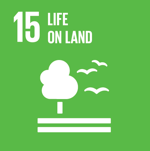Bioproducts to control nematodes and Sigatoka in banana and plantain
 Costa Rica
Costa Rica
 Dominican Republic
Dominican Republic
 Panama
Panama
 Venezuela
Venezuela
Executive Summary
Black Sigatoka (Mycosphaerella fijiensis Morelet) is the most important leaf disease of plantains and bananas, it increases production costs, reduces yield and affects producers' quality of life and income. Damage to roots caused by phytonematodes, mainly Radopholus similis is also very serious. The use of agrochemicals has been practically the only control strategy, damaging the environment as well as animal and human health.
The economic impact in several countries of Latin America and the Caribbean is significant: between 40 to 60% reduction in yields. Farmers must also compete in national and international markets with products free of chemical residues, which motivates the need to investigate new possibilities to solve the problem.
The objective of the project was to evaluate "promising" bioproducts (two strains of endophytic fungi at the root level and foliar application of two botanical extracts) for the control of phytonematodes and black Sigatoka. The experimental design that supports this research, allowed collecting sufficient information on whether or not endophytic fungi reduced the presence of R. similis compared to normal control (plots with nematicide) or without control (plots without application). The black Sigatoka component of the study included an estimation of the incidence and severity of the disease and phenological and production variables.
The technological solution
The technological solution considered nature-based solutions, essentially the use of biocontrollers and antagonists to suppress pests as difficult as nematodes and diseases as prevalent as Sigatoka in banana and plantain. As in similar research experiences, the proposed solutions signal important opportunities for biological control, however, it also confirms that they depend on the circumstances of the crop cycles (presence or absence of pathogens, climatic conditions, etc.). This lack of clear or explicit predictability may limit its adoption, however, we must also recognize that the potential environmental and socio-economic benefits could be significant.
Results
Endophytic fungi acted as nematode biocontrol agents in countries that registered high populations of R. similis, like in the cases of Panama and Costa Rica. This suggests that two applications of nematicides can be replaced by one of the biocontrollers. Regarding the growth of the root system, no significant differences were registered, with the exception of Panama, where corm plants protected with endophytic fungi presented the highest root weights.
Endophytic and botanicals were observed to have a positive effect on most of the variables evaluated for the control of Black Sigatoka. In the case of phenological and production variables, bioproducts acted similarly to agro chemicals, and in some cases statistically surpassed them. Also, in the Sigatoka case, bioproducts competed closely with chemical products and were significantly superior to untreated controls.
As an additional activity, the project assembled a library of endophytic fungal strains of strains in order to have it available for future programs.
Beneficiaries
The direct and indirect beneficiaries were specialists from the organizations in charge of the project, as well as technicians and officials from the public and private sectors who participated in the different workshops, field days and training sessions. The exact number was not indicated in the documentation. Other potential beneficiaries would be producers and consumers in case the project findings are adopted or adapted in the future.
Sustainable Development Goals



Participating Organizations
Executor
- International Network for the Improvement of Banana and Plantain (INIBAP) - Costa Rica
Co-executor
- Centro Agronómico Tropical de Investigación y Enseñanza (CATIE) - Costa Rica
- Instituto Dominicano de Investigaciones Agropecuarias y Forestales (IDIAF) - República Dominicana
- Instituto de Innovación Agropecuaria de Panamá (IDIAP) - Panamá
- Instituto Nacional de Investigaciones Agrícolas (INIA) - Venezuela




